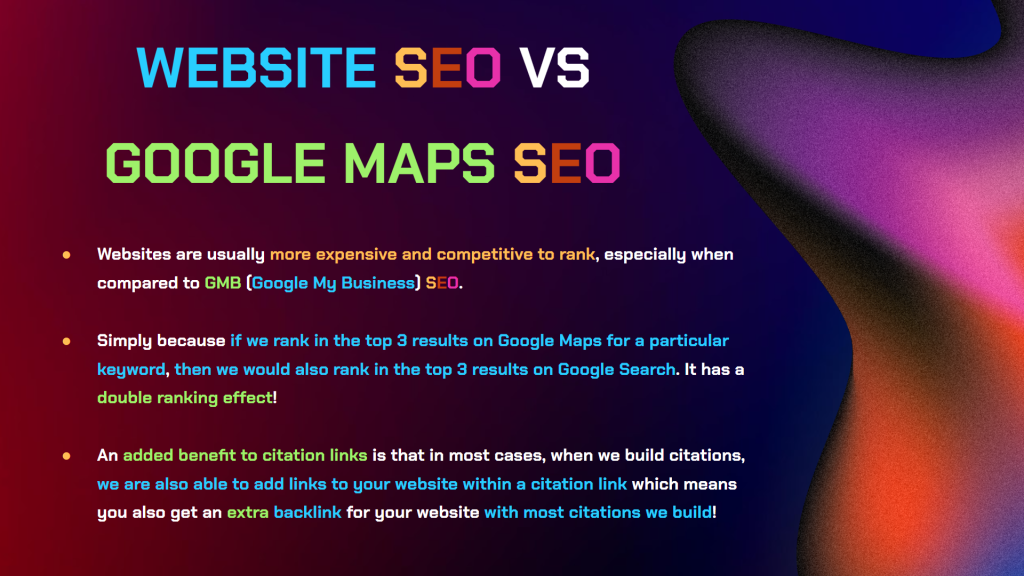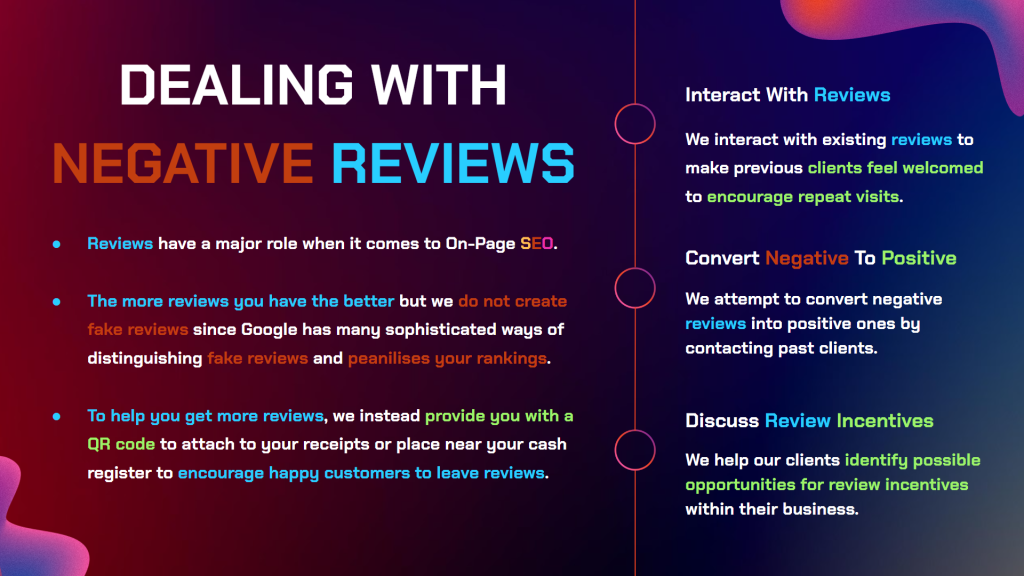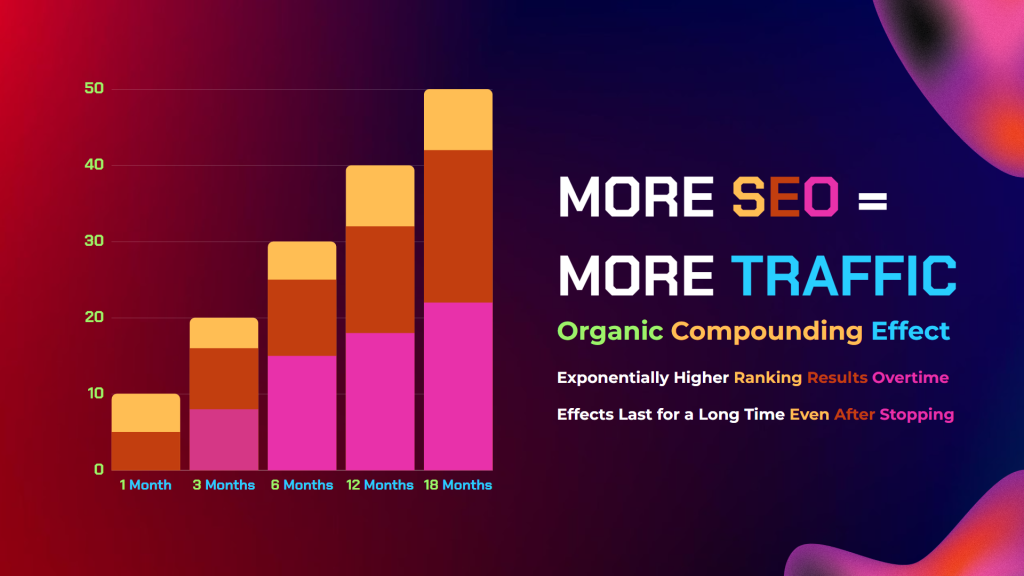When it comes to local SEO, one of the most important factors to consider is to rank your google my business page first.
Being listed on Google Maps not only increases your visibility but also drives more traffic to your website and boosts your conversions.
In this comprehensive guide, we will explore proven strategies to improve your business ranking on Google Maps.
Table of Contents
- Introduction to Ranking First
- Module 1: On-Page SEO Explained
- Module 2: The Currency of Trust
- Module 3: The Updates Section
- Module 4: Addressing Negative Reviews
- Module 5: The About Section
- Module 6: Consistency In NAP Data
- Module 7: Images Speak Louder Than Words
- Module 8: Business Categories Matter
- Module 9: Leveraging The Q&A Feature
- Module 10: Citations = Backlinks
- Conclusion to How to Rank First
- Need Help Managing Your GMB Profile?
Introduction to Rank Your Google My Business Page First Using Local SEO
To grasp the pinnacle of Google Maps, understanding on-page SEO for your GMB page is paramount. It’s akin to fortifying the foundation of your virtual storefront.
Let’s delve into the 10 modules that will elevate your GMB page and make it a beacon for local searches. After reading this article, you should have an idea of just how much work goes into what we do at Vortex Ranker.
Module 1: On-Page SEO Explained

In the intricate landscape of digital visibility, On-Page SEO stands as the architect of your online fortress.
This strategic practice is not just about keywords but a comprehensive approach to enhance your Google My Business (GMB) page, ensuring it stands tall amidst the virtual competition.
Understanding the Basics of On-Page SEO for Google My Business (GMB)
On-Page SEO is the virtual handshake your business extends to search engines, introducing the essence of your offerings.
For your GMB page, this translates into more than just stuffing keywords; it’s a meticulous orchestration of various elements to present your business as a trustworthy and relevant entity in local searches.
When you rank your Google My Business Page first, you are then able to truly yield the benefits of local SEO.
Maintaining a Steady Supply of Customer Reviews
It is vital to have at least 20 – 30 real customer reviews in order to start ranking properly on Google Maps.
And no, fake reviews will not work since there are so many checks Google has put in place to detect fraudulent reviews which almost always results in a penalization in rankings.
Find ways to incentivize happy customers to leave positive reviews. But the first step is making sure you have a scannable QR code near the cash register.
Strategic Placement of Keywords and Key Phrases
Keywords are the compass guiding search engines to your virtual doorstep. For your GMB page, identify and strategically place keywords relevant to your business.
Think like your customers. What terms are they likely to use when searching for products or services like yours? Embed these terms organically in your business description, services, and other pertinent sections.
Regular Updates: The Pulse of On-Page SEO
Imagine your GMB page as a living entity; regular updates are its heartbeat. Consistently post relevant content in the form of updates.
This could be anything from promotions and events to behind-the-scenes glimpses of your business.
Google appreciates fresh content, and so do your potential customers. It’s not just about telling; it’s about showing that your business is active and engaged with its audience.
Optimized Images: Visual Appeal with Purpose
Visuals play a crucial role in user engagement. High-quality images of your business, products, or services enhance the overall appeal of your GMB page.
Optimize images on your update posts with correct sizing and by adding relevant alt text and captions. This not only improves accessibility but also provides additional context to search engines.
Strategic Social Media Integration
While your GMB page is a powerhouse in itself, integrating it with your social media profiles can amplify its reach.
Social signals, such as shares and likes, contribute to the overall authority of your online presence. Ensure that your GMB page is linked to your official social media accounts.
For example; if you are a musician with a Google Business Profile, Then you’ll wanna strategically use your social media accounts to direct traffic towards your GMB.
This way you’ll be able to close more leads or as an example, get more student lesson gigs if you also teach music.
Effective Call-to-Action: Guiding User Interaction
For your GMB page, this could include encouraging users to visit your website, call your business, or make a reservation. A clear and compelling CTA not only enhances user experience but also prompts meaningful interactions.
Module 2: The Currency of Trust
Customer reviews on Google Maps stand as the currency of trust in the digital marketplace.
These reviews are not just testimonials; they are shaping your business’s online reputation and influencing its visibility in local searches.
The Dynamic Impact of Customer Reviews on GMB
Reviews on your GMB page are more than just a section for user feedback; they are a powerful testament to your business’s credibility.
Consider these scenarios: a user searching for a local restaurant, a family looking for a reliable plumber, or someone in need of a quick haircut. What do they all have in common? They turn to reviews.
Positive Reviews: Building Trust and Credibility
Positive reviews act as digital gold. They are endorsements from satisfied customers, attesting to the quality of your products or services.
These reviews are not just kind words; they are persuasive tools influencing potential leads to choose your business over competitors.
Google, in its search algorithm, recognizes businesses with positive reviews and rewards them with higher visibility.
Negative Reviews: Turning Challenges into Opportunities
Every business encounters dissatisfied customers at some point. The key is in how you handle these situations. Address negative reviews with a constructive and solution-oriented approach.
Acknowledge the issue, offer a solution, and, if possible, invite the customer to connect offline to resolve the matter. Turning a negative review into a positive one showcases your dedication to customer happiness.
Always do your best to fix negative reviews since if you do allow them to accumulate, this will result in capital loss in the long run.
Utilizing Reviews for SEO: Keywords and User-Generated Content
Beyond their impact on user trust, reviews also contribute to your GMB’s SEO. Pay attention to the language used by customers in their reviews.
These phrases and keywords are valuable insights into how your audience perceives and describes your business. Integrate these keywords strategically into your GMB page content.
Module 3: The Updates Section
The updates section of your Google My Business page serves as a dynamic storefront, providing a constant flow of information to your potential customers.
This section is not merely an extra feature; it’s a vital component that can significantly enhance your GMB page’s visibility and engagement. It is highly recommended to do this regularly since these updates counts as the On-Page SEO of your GMB Profile.
The Types of Updates That Help Rank Your Google My Business Page first
The updates section allows you to share various types of content, including posts about events, offers, products, and general news about your business.
Take advantage of this diversity to showcase the different facets of your business. Whether you’re running a limited-time promotion, introducing a new product, or sharing behind-the-scenes glimpses, each post contributes to your business’s narrative.
Utilizing Keywords in Updates
While creating updates, strategically incorporate relevant keywords. Think about the terms your potential customers might use when searching for businesses like yours.
These keywords signal to Google the relevance of your content to local searches, enhancing the chances of your GMB page appearing in relevant results. Treat them as keywords you intentionally imbed within the blog articles in your website to strengthen On-Page SEO.
Leveraging Seasonal and Timely Updates
Take advantage of seasonal trends, holidays, and local events to create timely updates. This not only keeps your content relevant but also positions your business as actively involved in the local community.
Timely updates demonstrate that your business is current and responsive to the needs and interests of your audience.
Module 4: Addressing Negative Reviews

Negative reviews are not the end of the road. In fact, they present an opportunity for businesses to showcase their commitment to customer satisfaction and turn a potentially harmful situation into a positive one.
Addressing these negative reviews is essential in rank your Google My Business Page first. Here’s a strategic guide on how to navigate and, ultimately, turn the tide on negative reviews.
Acknowledge Promptly and Professionally
The first step in addressing negative reviews is acknowledging them promptly and professionally. Ignoring or delaying a response can exacerbate the situation. Responding promptly shows that your business is attentive and values customer feedback.
Take the Conversation Offline
While it’s essential to address the negative review publicly, aim to take the conversation offline for resolution. Provide contact information or encourage the customer to reach out directly.
This not only demonstrates a commitment to resolving the issue but also avoids prolonged public back-and-forth.
Offer a Genuine Apology
Express empathy and offer a genuine apology for any negative experience the customer may have had. Avoid being defensive or placing blame. A sincere apology can go a long way in diffusing tension and creating a positive perception.
Provide a Constructive Solution
Alongside the apology, offer a constructive solution to address the customer’s concerns. Whether it’s a replacement, a refund, or an opportunity to revisit the service, demonstrate that your business is proactive in resolving issues.
Showcase Positive Intentions
Use the negative review as an opportunity to showcase your business’s positive intentions. Emphasize your commitment to customer satisfaction and continuous improvement.
This not only reassures the customer but also sends a positive message to potential customers reading the reviews.
Educate Your Team
Ensure that your team is trained on how to handle negative reviews professionally. Consistent and well-crafted responses across all team members reflect a unified and customer-centric approach.
Provide guidelines on when to respond publicly and when to take conversations offline. Try and use humor appropriately if the opportunity arises to break the ice and come to a solution faster and more naturally.
Module 5: The About Section
The about section of your Google My Business page is not just a space for a generic business description; it’s a strategic placement of keywords that can significantly impact your local search rankings.
Crafting a compelling and keyword-rich “About” section is crucial for maximizing the visibility of your business on Google Maps.
Balancing Readability and SEO
While it’s essential to optimize the about section for SEO, it’s equally important to maintain readability. Avoid keyword stuffing, which can make content sound unnatural and may be penalized by search engines.
Aim for a seamless integration of keywords that enhances the overall clarity and coherence of your business description.
Highlight Unique Selling Points
In addition to keywords, use the about section to highlight your business’s unique selling points. What makes your business stand out?
Whether it’s exceptional customer service, a unique product offering, or a long-standing presence in the community, these points contribute to the overall attractiveness of your business.
Strive for Conciseness
In the digital age, attention spans are short. Aim for conciseness in your about section while conveying essential information.
Clearly communicate what your business does, what sets it apart, and how customers can get in touch. Short paragraphs and bullet points can enhance readability.
Encourage User Engagement
Conclude your about section with a call-to-action that encourages user engagement. This could be an invitation to visit your website, contact your business, or learn more about your products or services.
User engagement helps rank your Google My Business Page first. An engaging conclusion prompts users to take the next step, contributing to a positive user experience.
Module 6: Consistency In NAP Data
Name, Address, and Phone (NAP) consistency is the holy trinity for local businesses aiming to bolster their online presence.
Maintaining this consistency across all platforms, directories, and online listings is crucial. Here’s why NAP consistency matters and how you can ensure your business remains in harmony across the digital landscape.
Search engines, especially Google, rely on the accuracy and consistency of business information to provide users with reliable search results.
Inconsistencies in your NAP data can lead to confusion, affecting your local search rankings and overall online visibility.
Avoiding Confusion for Customers
Imagine a potential customer finding your business on Google Maps, noting down the address, and then being unable to locate your business because the address on your website is slightly different.
Such inconsistencies can lead to frustration, erode trust, and result in a lost customer. Consistent NAP data ensures a seamless experience for customers. This, in turn, contributes to higher rankings in local search results.
Local Directories and Citations
Your business’s NAP data is not confined to your website or GMB listing. It extends to various local directories, citation sites, and online platforms where your business is mentioned. Consistent NAP data across these platforms strengthens your business’s overall online presence.
How to Ensure NAP Consistency
Audit Your Existing Listings: Begin by conducting a comprehensive audit of your existing online listings. Identify any variations or discrepancies in your business name, address, or phone number.
Check Local Directories: Verify and update your information on local directories such as Yelp, Yellow Pages, and other industry-specific platforms. Consistency across these platforms is key.
Monitor Changes: Keep a watchful eye on any changes to your NAP data. This is especially important if your business undergoes relocations, name changes, or changes in contact information.
Implement Consistency in Marketing Materials: Beyond online platforms, ensure that your NAP data is consistent in your offline marketing materials such as business cards, brochures, and signage.
Use a Standard Format: When inputting your NAP data, use a standard format. For example, decide whether to use abbreviations for street names or include suite numbers. Consistency in format reduces the likelihood of errors.
Educate Your Team: If you have a team managing different aspects of your online presence, educate them about the importance of NAP consistency. Provide guidelines on how to input business information uniformly.
Module 7: Images Speak Louder Than Words
Visuals play a role in capturing and retaining audience attention. This holds especially true for your Google My Business (GMB) page.
High quality images and video’s can significantly impact user engagement and contribute to a positive first impression.
Visual content is processed faster by the human brain compared to text. When users search for businesses on Google Maps, the visual content associated with your GMB listing are often the first elements they notice.
The saying “a picture is worth a thousand words” rings particularly true in this context.
High-Quality Images Enhance Engagement
Investing in high-quality images of your business, products, and services is an investment in user engagement.
Blurry, pixelated, or poorly composed images can have the opposite effect, potentially driving away potential customers. Aim for clarity, vibrancy, and relevance in the images you choose to showcase.
Showcasing Your Business Environment
Include images that provide a glimpse into your business environment. Whether it’s the welcoming interior of your store, the ambiance of your restaurant, or the professionalism of your office space, these images contribute to the overall perception of your business.
Highlighting Products and Services
If applicable, showcase your products or services through images. High-resolution photos of your menu items, retail products, or the outcomes of your services provide potential customers with a tangible sense of what your business offers.
Before-and-After Visuals
For businesses that provide services, consider incorporating before-and-after visuals. Whether it’s a renovation project, a cleaning service, or a transformation in appearance, these visuals can be compelling and showcase the effectiveness of your services.
Team and Behind-the-Scenes
Humanize your business by featuring images of your team and behind-the-scenes elements. This adds a personal touch, helping potential customers connect with the people behind the business.
Images of team members at work or during company events foster a sense of transparency and authenticity.
Encourage User-Generated Content
Encourage customers to share their images and experiences. User-generated content not only provides authentic perspectives but also indicates an engaged and satisfied customer base.
Respond positively to customer-contributed images to foster a sense of community.
Utilize Different Image Categories
Google allows you to categorize images on your GMB page. Take advantage of this feature to organize your images into different categories such as interior, exterior, products, and team.
This makes it easier for users to navigate and find the specific visuals they are interested in.
Optimizing Image Metadata
Beyond the visual appeal, optimize the metadata associated with your images. This includes file names, alt text, and descriptions.
Incorporating relevant keywords in this metadata can enhance the discoverability of your images in local searches.
Module 8: Business Categories Matter
Selecting the right business category on your Google My Business (GMB) page is not a mere formality; it’s a strategic decision that directly influences your business’s visibility in local searches.
Understanding the significance of business categories and choosing the most accurate ones can significantly impact your GMB page’s effectiveness in reaching the right audience.
Local Search Ranking Factors to Rank Your Google My Business Page First
Google considers the relevance of your business category as one of the factors in determining local search rankings.
When your chosen categories match the user’s search intent, it signals to Google that your business is a suitable match, contributing to higher rankings in local search results.
While it might be tempting to choose broad categories to maximize visibility but it is very highly recommended to avoid overgeneralization.
Selecting overly broad categories that don’t accurately represent your business can lead to mismatched search results and a less targeted audience.
Strategic Influence on Visibility
Google uses the business category information to determine which searches your GMB listing appears in. When users search for services or products related to your category, Google provides the most relevant results.
Choosing accurate and specific categories increases the likelihood of your business appearing in relevant local search results resulting in higher client acquisition rates.
Your chosen business categories should align closely with the services or products your business provides. If you operate a bakery, selecting categories like “Bakery,” “Café,” and “Dessert Shop” ensures that your GMB page appears in searches related to these offerings. This alignment enhances the accuracy of search results.
Google allows businesses to choose multiple categories. Take advantage of this feature to comprehensively represent the various facets of your business. If, for example, your restaurant offers catering services, selecting both “Restaurant” and “Caterer” ensures visibility in searches related to both categories.
Competitor Analysis for Strategic Selection
Conduct competitor analysis to understand the categories your competitors are using. While your categories should reflect your unique offerings, analyzing competitors can provide insights into effective categorization strategies within your industry or niche.
Utilize Additional Attributes to rank your Google My Business Page first
In addition to primary categories, Google My Business allows you to add attributes that provide more detailed information about your business.
Utilize these attributes to highlight specific features, such as “Wi-Fi availability,” “Outdoor seating,” or “Wheelchair accessibility.” This supplementary information enhances the richness of your listing.
Module 9: Leveraging The Q&A Feature
Google Questions & Answers (Q&A) is a feature on your Google My Business (GMB) page that offers a direct line of communication between your business and potential customers.
Understanding how to leverage this feature can enhance user engagement, provide valuable information, and contribute to the overall relevance of your GMB page.
Proactive Engagement with Your Audience
The Q&A section allows users to ask questions about your business, and anyone can provide answers.
By proactively engaging with your audience in this section, you not only offer helpful information to potential customers but also showcase your business’s responsiveness and commitment to customer satisfaction.
Anticipate the questions that potential customers might have about your business and provide proactive answers.
This not only saves time for users but also demonstrates your business’s attentiveness. Common questions might include information about your operating hours, services offered, or any unique features.
Utilize Keyword Opportunities
When answering questions, strategically incorporate relevant keywords. Think about the terms potential customers might use when searching for businesses like yours.
Keyword utilization plays a big role in helping rank your Google My Business Page first. This practice contributes to the overall optimization of your GMB page for local searches, enhancing its visibility.
Correct Inaccurate Information
In some cases, users might provide answers that contain inaccuracies. It’s crucial to monitor and correct any misinformation promptly. This ensures that users receive accurate and reliable information about your business.
Module 10: Citations = Backlinks

Citations, or mentions of your business’s name, links, address, and phone number (NAP), play a vital role in local SEO, especially for your Google My Business (GMB) page.
Embracing citations strategically can significantly enhance your backlink profile and contribute to your business’s authority and visibility.
Essentially a citation, just like a backlink, is a link of GMB profile and other relevant information posted on another website.
Understanding the Importance of Citations
Citations are essentially online references to your business information. These references can occur on various platforms, including local business directories, industry-specific websites, and social platforms.
Google considers these citations as a crucial factor in determining the credibility and relevance of your business.
Consistency in NAP data across all citations is fundamental. Google relies on this consistency to verify the legitimacy and reliability of your business.
Inaccurate or inconsistent information can lead to confusion, potentially impacting your local search rankings.
Choose Authoritative Directories
Not all citations hold the same weight. Focus on obtaining citations from authoritative and reputable directories within your industry.
These directories act as signals to Google that your business is recognized and valued within its specific niche.
While general business directories are valuable, local and industry-specific citations carry additional weight.
Listings in local directories and platforms relevant to your industry provide contextual relevance, reinforcing your business’s association with specific geographic locations and niches.
Niche Citations for Specialized Authority
Consider niche citations that are specific to your industry. These can include platforms related to your specific products or services.
Niche citations not only contribute to your overall backlink profile but also establish your business’s authority within a specialized context.
While the quantity of citations matters, the quality of backlinks and citations is paramount. Aim for high-quality citations from reputable sources.
A few authoritative and relevant citations can have a more significant impact than numerous low-quality mentions.
Positive publicity can lead to organic citations. Whether through press releases, features in local publications, or collaborations with other businesses, positive PR efforts can naturally result in citations that enhance your online visibility.
When creating citations, strategically incorporate relevant keywords into your business descriptions.
This aligns with the principles of on-page SEO and contributes to the overall optimization of your GMB page for local searches.
Conclusion on How to Rank Your Google My Business Page First with Local SEO for Your Google Maps
Businesses that embrace these principles position themselves not only to appear prominently in local searches but also to foster positive user experiences, build trust with their audience, and stay ahead in the competitive landscape of local online visibility.
As the digital landscape evolves, businesses equipped with the insights from this guide are well-prepared to navigate the dynamic world of local SEO on Google My Business.
If you wanna learn more about how to generate organic visits then start reading by clicking the bold pats of this sentence. Best of luck to you on your GMB SEO journey.
Still Need Help Managing Your GMB Profile?
If you are still in need of any assistance or help with your GMB Profile management or looking to grow your organic search results. Then I highly recommend you book a free consultation with the writer of this article, Ramzy, CEO & Founder of Vortex Ranker by clicking here.




